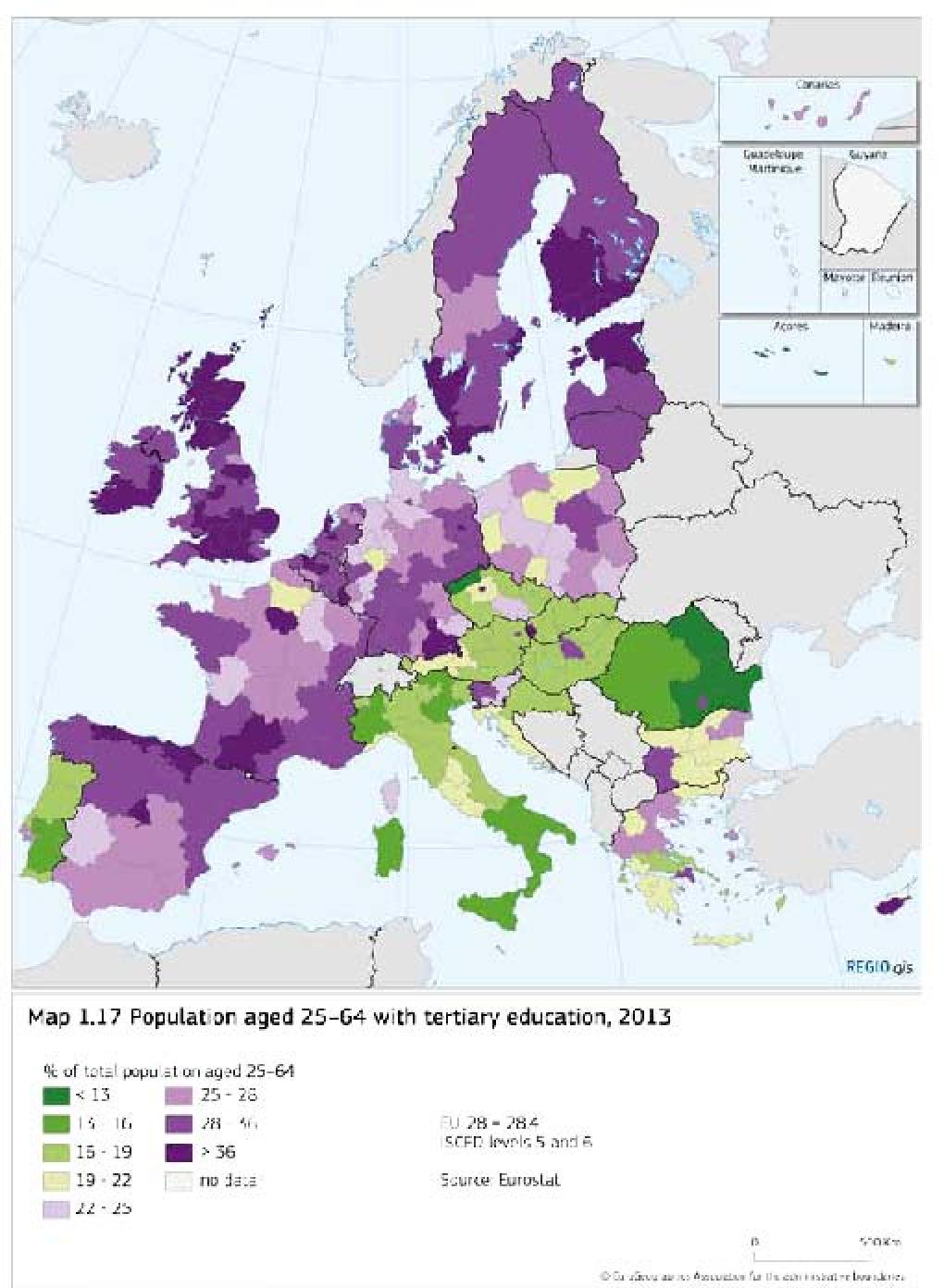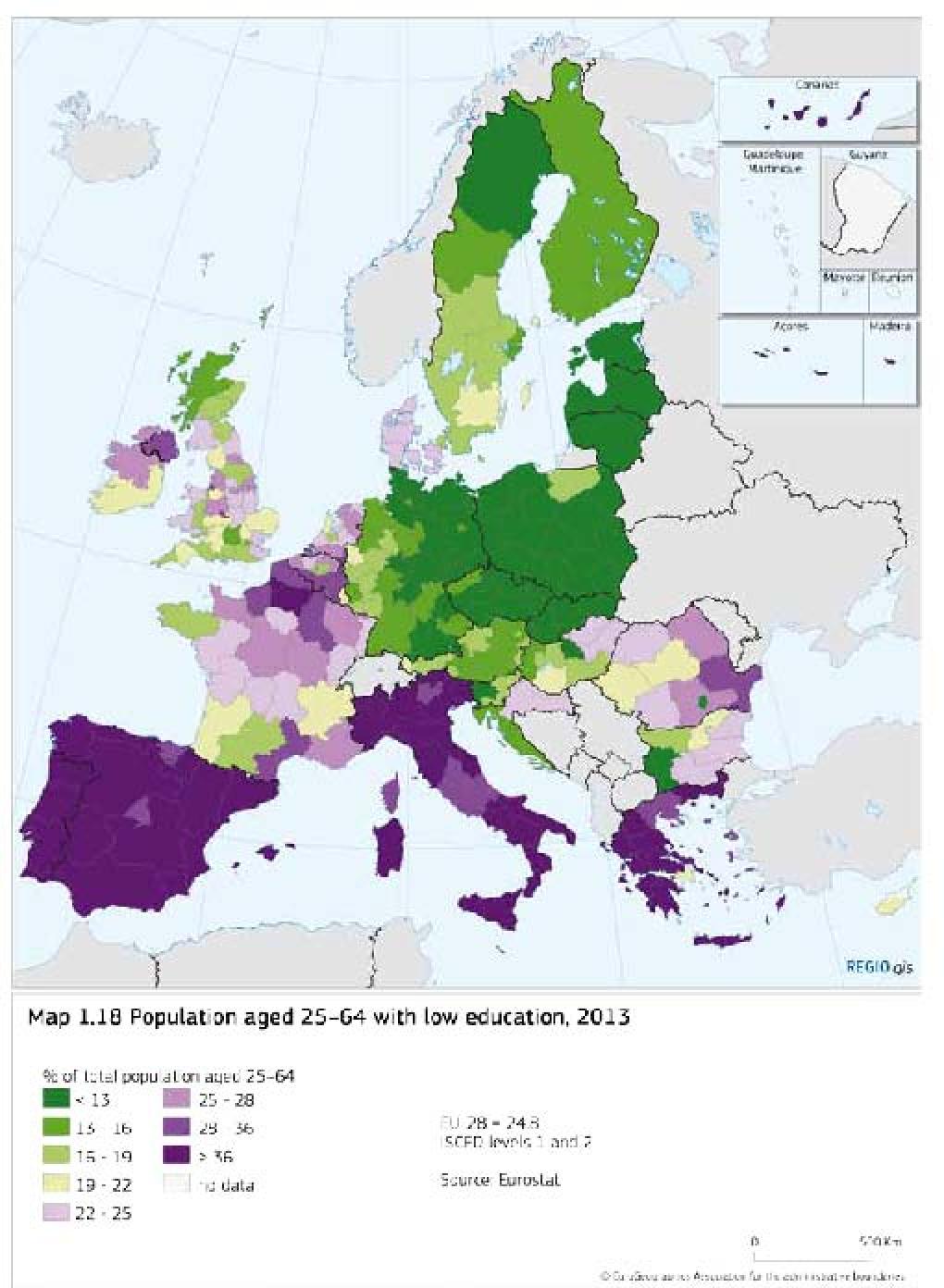Tertiary education, with its links to research and innovation, can help to provide the highly skilled human capital that the EU needs to create jobs, economic growth and improvements in social welfare.
A well-educated workforce is key to prosperity. There tends to be a strong correlation between the educational attainment of a region’s workforce and median earnings in the region. In addition, attaining a relatively high education level tends to mean less risk of
being unemployed. The share of people aged 25–64 with a high educational attainment level (i.e. with tertiary qualifications), however, varies significantly across regions.

In only 10% of the regions in 2013 was the share over 40%, with Inner London, Brabant Wallon and Helsinki having the highest figures. In most cases, regions with capital cities or adjoining them have the highest educational attainment levels.
Regional variations can be substantial within a country. In the UK, the share of people with tertiary education varies between 28% and 63%, more than the variation between Member States, which is only between16% and 42%. At the other extreme, around a quarter of people aged 25–64 in the EU have only basic schooling (i.e. less than upper secondary level qualifications) Many of the regions where the proportion of people with this level of education is largest are in the southern Member States, in a number of cases, the figures exceeding 50%.

In most cases, regional extremes seem to follow national averages, but there are a few exemptions. For example, Romania has a higher share of low-educated than the UK or Denmark, but Bucureşti — Ilfov has a lower share than any of the regions in these two Member States.
Source: 6th Report on Economic, Social and Territorial Cohesion Section 9, page 34
| Originally Published | 17 Jul 2018 |
| Knowledge service | Metadata | Territorial (ARCHIVED) |
